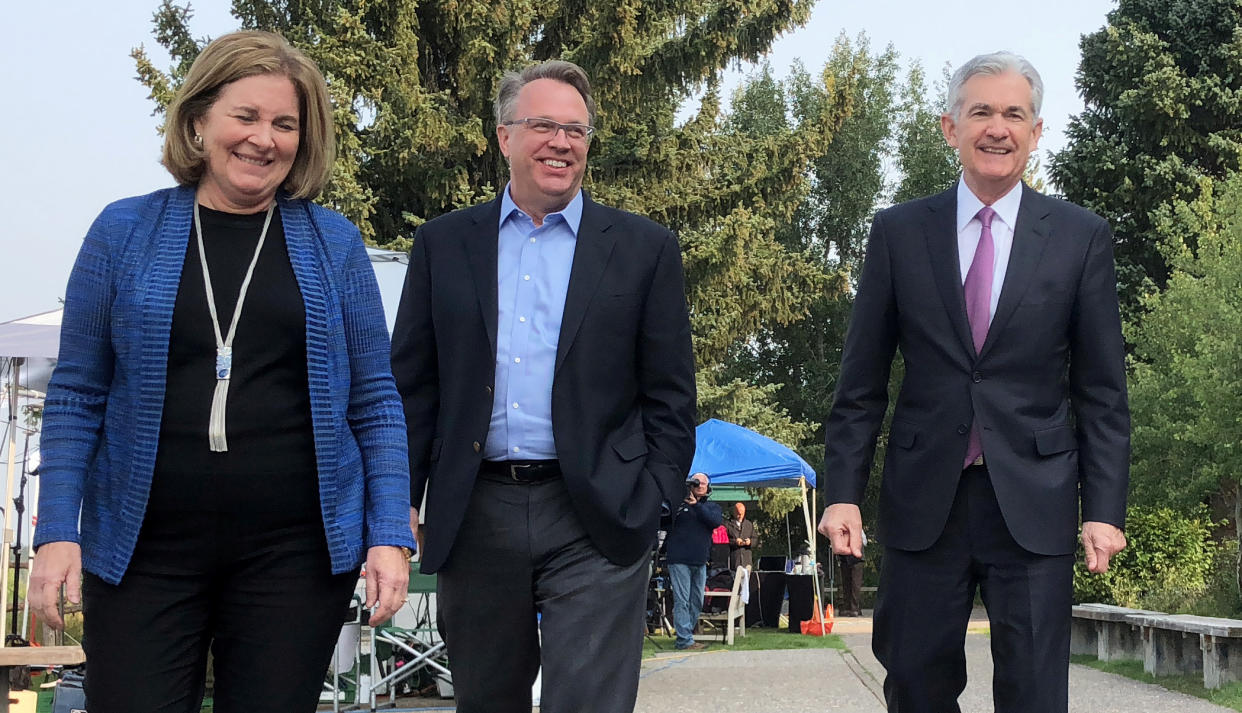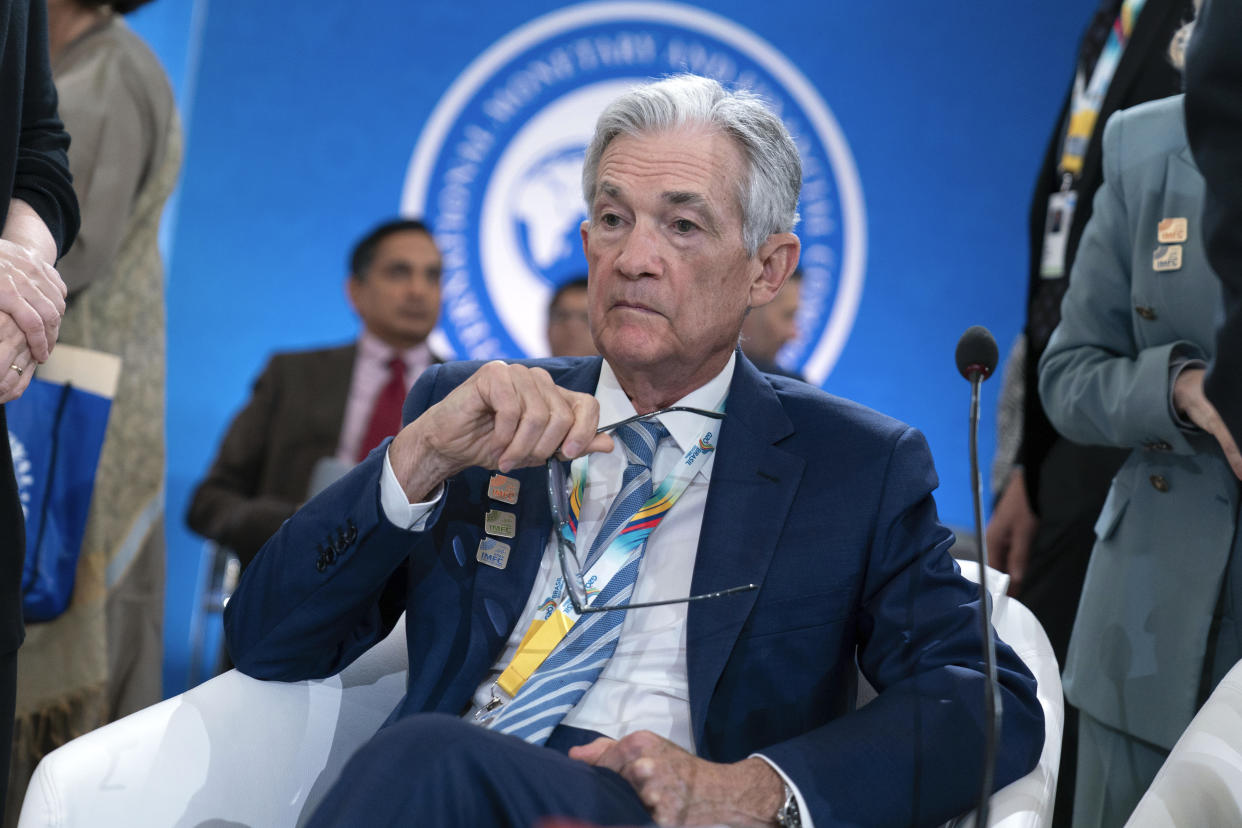Investors confused about the Fed's rate path look to Jay Powell for answers
Federal Reserve officials face a lot of questions as they convene for their two-day policy meeting this week, and investors are hoping Chair Jerome Powell will provide some answers.
Has the cooling of inflation really stalled? Has the Fed’s outlook on that cooling shifted? And if so, what does that mean for any hope of interest rate cuts in 2024?
Investors are confused, offering a cacophony of views in the lead-up to the Fed’s deliberations in Washington. While some say nothing has changed, others say everything has changed — and there are lots of voices in the middle.
"Inflation has stalled to some degree," said Wilmer Stith, bond portfolio manager for Wilmington Trust. "The question is will it remain stalled over the course of 2024?"
Traders have been pushing back expectations for the timing of rate cuts as talk shifts from when the Fed will start cutting rates to whether the Fed will cut rates at all this year.
There was a time this year when markets had bet on six cuts starting in March. That slipped to June and then July. Now they are pricing in just a 45% chance of a first rate cut in September.
Virtually no one is betting that any action will be taken at this week’s meetings, which end Wednesday afternoon. The Fed is widely expected to hold rates steady, keeping them at a 23-year high.
"There’s still a lot of time left in 2024," says Stith. "While it's not going to be six rate cuts, I could still see them trying to do something to get the ball rolling in terms of a rate cut this year."
Read more: What the Fed rate decision means for bank accounts, CDs, loans, and credit cards
Not all Fed watchers are as worried about hotter inflation. Luke Tilley, chief economist for Wilmington Trust, said his outlook has not materially changed.
The housing component of inflation is what’s really keeping inflation elevated, he said, but that’s still slowing on a year-over-year basis.
"I do not think progress on inflation has stalled, and that's what threw me," said Tilley.
He still believes the Fed’s preferred inflation gauge — the Personal Consumption Expenditures (PCE) index — will continue dropping enough for the central bank to begin cutting rates by the middle of the year.
Its last reading in March was 2.8%, and Tilley noted this is still within the range of the central bank's 2.6% forecast for the end of the year.
"Powell said plenty of times last year that you have to start cutting before you get to 2%," said Tilley.
Tilley predicted the first rate cut would get pushed back to July instead of September. That still leaves room for three cuts in Tilley’s view.
But if the Fed doesn't cut in July, he said it will wait until December so that it’s not cutting too close to the presidential election in November.
Former Kansas City Fed president Esther George said she thinks the Fed could still cut rates in the second half of the year and that two cuts this year would be reasonable. But for cuts to start in July, it would require the “pretty dramatic affirmation” of a slowing economy.
George also acknowledged that cuts could get pushed out to December and that it could be 2025 before there are meaningful cuts.

The Fed is able to wait because inflation expectations look to be holding around their target and wages have been moderating, she said.
But there are also risks to waiting, she added. The longer the Fed holds rates at the current level to rein in inflation, the greater the risk of recession.
"[The Fed] would like to avoid hurting the economy with these rates and I don't know if that's going to be possible," George said.
Powell himself made a pivot in the weeks leading up to this week’s meeting, signaling in comments on April 16 that rates are likely to stay higher for longer by saying it will take "longer than expected" to achieve the confidence needed to get inflation down to the central bank’s 2% target.
"Given the strength of the labor market and progress on inflation so far, it's appropriate to allow restrictive policy further time to work and let the data and the evolving outlook guide us," Powell said.
His comments marked a departure from previous assurances that the overall outlook had not changed much despite some hotter-than-expected readings in the first two months of the year.
Powell warned on April 16 that he didn’t expect the PCE inflation number would show progress, and he was right.

PCE rose at a clip of 2.8% year over year for the month of March, which was the same level as February and a tenth of a percent higher than expected.
He also said that three- and six-month measures of inflation based on PCE would be even higher.
A jump to 4.4% for the three-month annualized reading on core PCE is enough for the Fed to be a bit worried that inflation may be accelerating, said Tilley. Still, he added, that number is getting a huge boost from seasonality.
Year-over-year comparisons could become even more challenging starting in June because inflation started dropping quickly in the second half of last year. That could make it tougher for the Fed to become confident inflation is dropping enough to start cutting rates.
This week George expects the central bank will reinforce Powell’s views that inflation data in the first quarter hasn’t increased the Fed’s confidence of getting back to 2% inflation.
"They will have to continue to message that they've seen inflation stall the first three months of the year, and they don't want to see it accelerate," said George.
One Fed watcher who is expecting to hear some hawkish commentary this week is Matt Luzzetti, US chief economist for Deutsche Bank Securities.
He now expects only one rate cut this year in December, followed by modest rate cuts in 2025. Beyond next year, he expects the Fed to cut rates to just below 4% by the end of 2026.
"Another round of elevated inflation data is likely to lead to a more hawkish-leaning message at the May FOMC meeting," Luzzetti said in a research note.
"Meeting signals should indicate that the likelihood of a rate cut over the coming meetings has diminished."
Click here for in-depth analysis of the latest stock market news and events moving stock prices.
Read the latest financial and business news from Yahoo Finance
